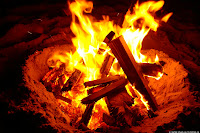
Several things define human beings for what they are: self awareness, the ability to visualise the future, selfless sacrifice, and story. There is something fundamentally human about the need to tell, hear, and participate in stories. Even something as simple as gossip has an underlying structure: a beginning, a middle and an end, dialogue, a hero and a villain, participation, and the perceived distinction between right and wrong.
“And can you believe what she did next …”
“No – the cheek of it.”
“Well, I wasn’t going to stand for that so I said …”
I’ve been thinking a lot about the structure of story over the last few days because I’m currently planning the story for my second book. I had so many problems refining the story for the first book that this time I’m planning the story out on an excel spread sheet. I require each of the story elements, main story, sub-plots, and character developments (including the villains), to have a complete story arch.
Ha, you thought a story had only a beginning, middle, and end? Well it does and I guess the basic structure was laid down millions of years ago around the very first camp fires, but a novel is slightly different. Because of its greater length and complexity a novel has to pass through a more complete and complex story pattern. I don’t know if this is something we learn as we grow up or feel instinctively, but no novel is going to succeed if is only a story. I use an eight point story arc:
• Stasis
• Trigger
• Quest
• Surprise
• Critical Choice
• Climax
• Reversal
• Resolution
In addition, I require the main story to hit each of 12 story beats specific to the genre I’m writing in. These are the 12 I use for an adventure story (each genre has its own unique story beats):
• The main character faces a strong moral dilemma in achieving a goal.
• The antagonist poses opposition, both morally and physically to the goal.
• The main character confronts the major complication, but proceeds into the story.
• The story moves into a new world, and the main character makes an achievement.
• The antagonist takes control of the story, sets the counter-plot in motion.
• The main character moves forward, believing himself to be victorious, but finds the antagonist to be equal and opposing.
• The main character restates the goal, with renewed conviction, but experiences his first setback.
• The antagonist spins the counter-plot forward, and achieves momentum against the main character.
• The protagonist experiences defeat at the hand of the antagonist, and loses his moral strength.
• The protagonist loses the will to achieve his goal, but resuscitates his motivation and moral strength.
• The protagonist restates his goal and summons up his moral courage. The antagonist restates his mission to destroy the protagonist, as well as his motivation and courage.
• The protagonist and antagonist prepare for confrontation, but the protagonist experiences an epiphany of moral courage that gives him what it takes to defeat the antagonist. understanding his life with renewed meaning and understanding.
Each of the sub-plots also has to satisfy the story beats of its own genre. I’m not a romance writer and I would have to research the appropriate story beats, but I guess that if I had a romance sub-plot I would have a list that looks something like this:
• Boy meets girl.
• Girl rejects boy, but boy persists.
• Girl grows to like boy.
• Boy does something to distance girl.
• Boy and girl are reconciled.
• Boy and girl are split up despite their love.
• Boy and girl fight against the odds to be reunited but fail.
• Boy and girl finally overcome the odds and are reunited.
John Truby (see writer’s store expert articles) believes a successful film script should be an amalgamation of three genre’s and hit a total of 22 story beats. I’m not so formulaic as Truby, but I do believe that each story line and character development needs to be a complete story in its own right to be satisfying to the reader and that the overall story needs to meet the reader’s genre expectations.
So until I have sorted the story I'm not even going to write the first draft.
new posts in all blogs
.jpg?picon=708) By: Peter R,
on 12/2/2007
By: Peter R,
on 12/2/2007
Blog: The Mervyn Bright Site (Login to Add to MyJacketFlap)
JacketFlap tags: Methodology, Story Structure, Methodology, Story Structure, Add a tag
Viewing: Blog Posts Tagged with: Methodology, Most Recent at Top [Help]
Results 1 - 1 of 1
Blog: The Mervyn Bright Site (Login to Add to MyJacketFlap)
JacketFlap tags: Methodology, Story Structure, Methodology, Story Structure, Add a tag
0 Comments on The defining nature of story as of 1/1/1900
Add a Comment


